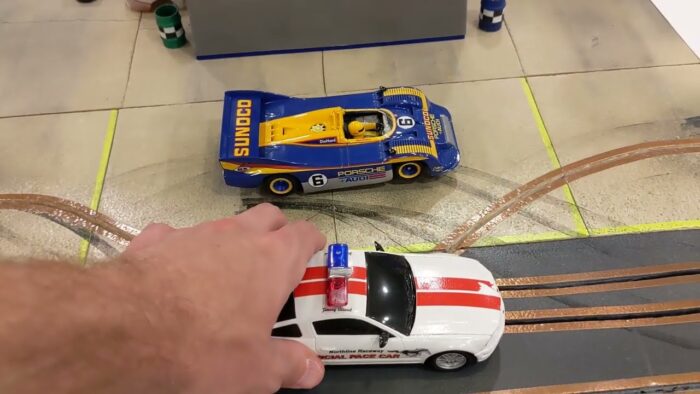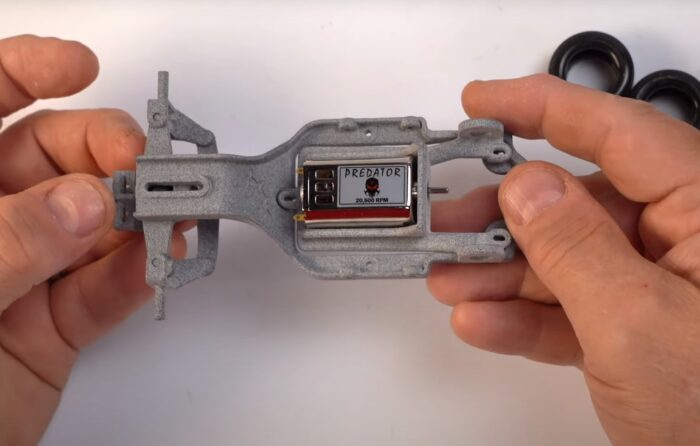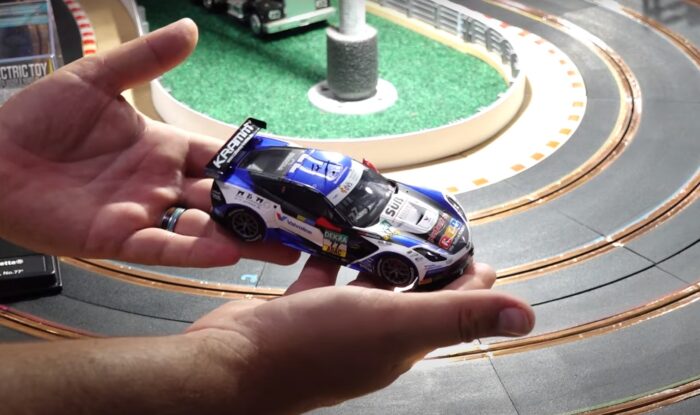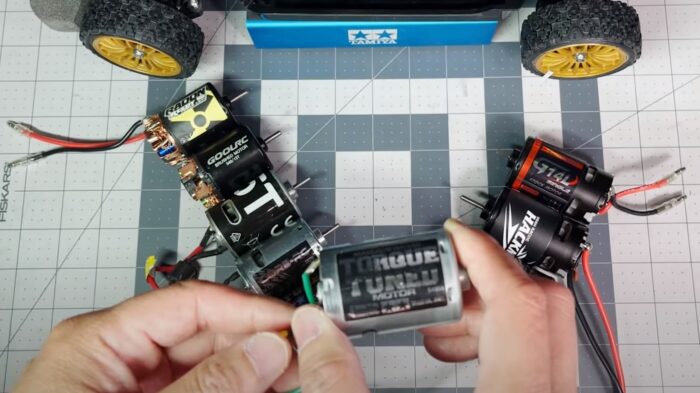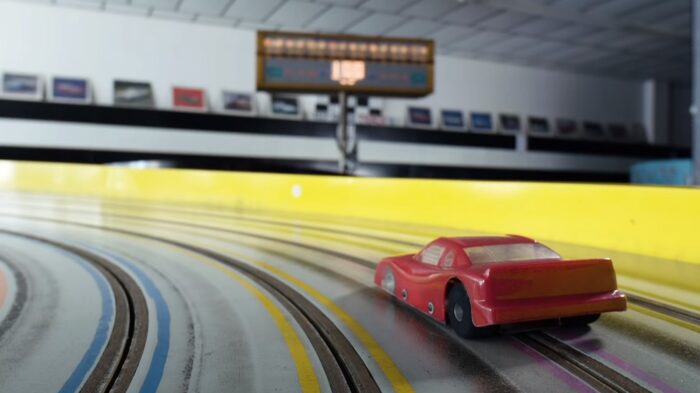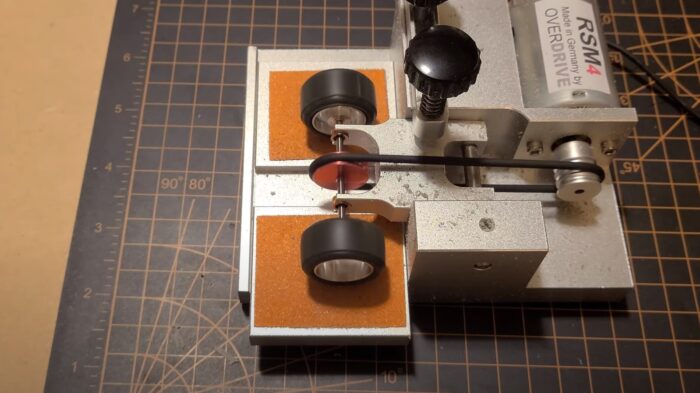I’ve built numerous ho slot cars over the years. The procedure is always different and attracts me to test out more things the next time I do it.
Over the years, I’ve met a fair share of individuals with the same hobby who made their own vehicles.
It is not uncommon to see people participating in a race with what they’ve made.
I sparked your interest, didn’t I?
Let me share with you what is needed to make your own slot RC car.
Table of Contents
Materials and Tools Needed
To begin building your slot RC car, you will need various components and tools that are essential for assembly and customization.
The primary components include:
- Chassis
- Body
- Motor
- Transmission and Gears
- Wheels and Tires
- Suspension System
- Electronics
The recommended tools for assembly and customization might include:
- Screwdrivers
- Pliers.
- Soldering Iron
- Drills and Bits
- Paints and Brushes
- Decal Sheets
Designing Your Slot RC Car
When designing your slot RC car, the first decision to make is whether to opt for a vintage or modern aesthetic.
Vintage cars are about recreating classic models with attention to historical accuracy, while modern designs can be sleek, streamlined, and equipped with the latest technology.
Planning and sketching your design are critical steps. Start by drawing rough sketches to visualize the concept of your RC car.
Consider the placement of components like the motor, and batteries, and how the chassis will support the body.
Use graph paper to maintain scale and proportion, and consider different views (top, side, front, and rear) to ensure a comprehensive design. Materials selection is influenced by the design.
For instance, a vintage car might use more metal parts to authentically mimic older models, whereas a modern car might employ lightweight plastics or composites for improved performance.
Throughout the design phase, flexibility is key.
Prepare yourself for revising your sketches as you refine your vision and consider how each component will fit together to create a functional and aesthetically pleasing slot RC car.
Building the Chassis
The chassis is the backbone of any slot RC car, serving as the platform upon which all other components are mounted.
The choice of materials for the chassis can significantly affect the performance and durability of your car.
Common materials include plastic, aluminum, and carbon fiber, each offering different benefits:
- Lightweight and inexpensive, plastic is a good choice for beginners. It’s easier to work with but may not offer the same durability as metal.
- This material provides a great balance of weight and strength, making it a popular choice for both amateur and professional builders.
- Known for its stiffness and lightweight, carbon fiber is ideal for competitive racing due to its high performance.
Building the chassis involves a step-by-step process that typically includes:
- Start by laying out the placement of components such as the motor, transmission, and mounting points for the suspension and wheels.
- Using your plans, cut the material to size and drill any necessary holes for screws, axles, and other fittings.
- Attach the components using screws and adhesives. Ensure that everything is aligned correctly and that the chassis is sturdy.
- Once assembled, test the chassis for strength and check that all parts move freely without interference.
It’s important to ensure that the chassis is not only strong but also well-balanced.
The distribution of weight across the chassis can greatly affect the car’s handling, so adjustments might be needed as other components are added.
Assembling the Body
For the body of your slot RC car, you have two main options: using a pre-made body or scratch-building your own.
Pre-made bodies are available in various designs and can be customized with paint and decals.
Scratch-building, while more time-consuming, allows for complete customization and is a rewarding challenge for those who want a unique vehicle.
Here are techniques for both approaches:
Using Pre-Made Bodies
Choose a body that fits the scale and style of your chassis.
Prepare the surface by sanding lightly, then apply primer to help the paint adhere.
After painting, add decals and a clear coat to protect the finish.
Scratch-Building
Start by creating a mold or template based on your design sketches.
Materials can be shaped. I am talking about materials like:
- Balsa wood
- Foam
- Lightweight plastic
Once the basic shape is created, refine the surface with sanding, apply paint, and finish with decals and clear coats as desired.
Customizing the body involves careful painting and the application of decals:
- Use airbrushes for a smooth, professional finish.
- Mask areas to create designs or racing stripes.
- Decals can add logos, numbers, or graphical designs.
- Use a decal softener to ensure they conform to the curves of the body without wrinkling.
The body not only defines the look of your slot RC car but also contributes to its aerodynamics and overall performance.
Installing the Motor and Electronics
Choosing the right motor and correctly installing the electronic components are critical steps in building a high-performance slot RC car.
The motor determines the speed and torque of your RC car, so it’s important to select one that suits the type of racing you plan to engage in.
Choosing the Motor:
Type
There are mainly two types of motors used in slot RC cars:
- Brushed
- Brushless
Brushed motors are traditional, cheaper, and easier to maintain, while brushless motors offer higher performance and efficiency but at a higher cost.
Power
Consider the voltage and RPM ratings of the motor.
Higher voltage and RPM provide more speed but can be harder to control and may require more robust electronic management.
Installing Electronics:
- Wiring: Proper wiring is essential for reliable operation.
- Speed Controller: The electronic speed controller (ESC) regulates the power supplied to the motor.
- Battery: Select a battery that provides the right balance of capacity and weight.
After installing the motor and electronics, it’s crucial to test the system thoroughly.
Check for any unusual noises or heat build-up, which can indicate problems.
Ensure that all electronic components are securely mounted and that the RC car handles the added weight without loss of performance.
Setting Up the Suspension and Transmission
The suspension and transmission are vital for the handling and efficiency of your slot RC car.
Proper setup of these components can significantly enhance your car’s performance on different track surfaces.
Suspension Setup
Options include fixed, independent, or active suspension systems. Independent suspension allows each wheel to move independently, which is better for handling uneven surfaces.
You can adjust the stiffness and damping of the suspension to suit track conditions.
Softer settings are generally better for bumpy tracks, while stiffer settings are preferred for smooth, fast tracks.
Transmission Options
Choosing the right gear ratio is crucial for optimizing performance. A lower gear ratio provides better acceleration, while a higher gear ratio increases top speed.
Use durable materials such as steel or aluminum for gears to withstand the stresses of racing. Proper alignment and calibration of the suspension and transmission are essential.
Regularly check and adjust the alignment to ensure that the RC car travels straight and responds predictably to controls.
Configuring Wheels and Tires
The choice of wheels and tires significantly affects the traction, handling, and overall performance of your slot RC car. Different track surfaces require different types of tires for optimal performance.
Choosing Wheels and Tires:
1. Tires can be made of various materials such as:
- Rubber
- Silicone
- Foam
Rubber tires offer good grip on most surfaces, while silicone tires work well on very smooth tracks. Foam tires, although less durable, provide excellent traction on indoor carpet tracks.
The size and width of the tires should match the scale of your RC car and the type of track. Wider tires generally provide more grip but can also increase drag.
2. Adjusting Wheel Alignment:
Camber is the angle of the wheels relative to the vertical.
Adjusting camber can help optimize tire contact with the track during turns.
Adjusting the toe (the angle of the tires to the direction of travel) can affect how sharply the RC car turns.
Toe-in improves stability at high speeds, while toe-out can enhance cornering ability.

